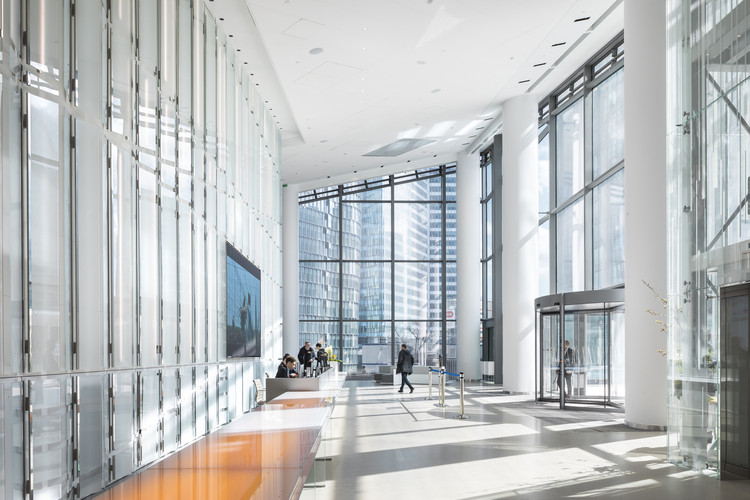More natural light, less glare and less heat: How does self-tinting glass work?

More natural light, less glare and less heat: How does self-tinting glass work?
Through a 2016 survey of 400 employees in the United States, Saint Gobain found that office building occupants routinely complain about poor lighting, temperature, noise, and air quality, recognizing the importance of improving lighting and thermal comfort in buildings while keeping energy consumption low. and freedom of design for architects and clients. was his solution SageGlass, an innovative glass first created in 1989 and developed over the past three decades. The glazing, which features a dynamic glazing that protects against the sun’s heat and glare, simultaneously improves the entry of natural light. An aesthetic and sustainable solution that adapts to outdoor conditions and eliminates the need for blinds or awnings.
.jpg?1617076908)

To work, SageGlass uses a predictive daylighting algorithm that takes into account temperature, lighting, occupancy, window size, time of day, season, building orientation, sun angle, and conditions from the sky to precisely regulate tint under optimal conditions. This allows for reduced glare without the need for shaders, optimizing the amount of natural light to reduce the need for artificial light and energy expenditure. The data is tracked by roof and facade sensors, which can be integrated with existing building management systems (BMS). Finally, glare and hue contrast can also be controlled manually via a mobile app or touch screen, rather than relying solely on sensors and automated processes.


There are four tinting options: None, Light, Strong and Dark, each transmitting between 60% and less than 1% light respectively. Depending on the selected version, the glass can also be partially tinted: SageGlass LightZoneCompared to the basic SageGlass product, it can be divided into up to three independent pigment zones, providing more precise solar control and excellent interior color reproduction; Harmony sage It features more gradual hue transitions and an improved ‘biophilic style’.



The benefits of SageGlass extend beyond lighting control. The tint helps maintain comfortable indoor temperatures, and only allows sufficient solar thermal energy to maintain comfortable indoor conditions and reduce the need for heating, air conditioning, and artificial lighting. In turn, eliminating systems such as blinds and blinds reduces maintenance frequency, saving costs in the future. Together, these properties can help you obtain energy and sustainability certifications, including LEED, BREEAM, and others.


SageGlass has been used in a variety of projects, including Saint-Gobain office building in Paris, France. As its architects say, the glass “continues to be a symbol of the company’s traditional activity and thanks to its crystalline architecture, the tower emphasizes its aesthetic qualities, light transmission, heat insulation and low emissivity properties.” Through the use of SageGlass, tower offices, “greenhouses” and reception areas have strong natural lighting, highlighting environmental concerns and increasing energy efficiency. Behind this tower, there are other projects using SageGlass, of which there are more than a thousand, include: Nestlé headquarters in Switzerland, lottery in the UK, insight In Germany, Ashford Castle in Ireland and Boy State University in the United States.


“Professional problem solver. Subtly charming bacon buff. Gamer. Avid alcohol nerd. Music trailblazer.”




:quality(75)/cloudfront-us-east-1.images.arcpublishing.com/elcomercio/6NEH6FMKYBCU7JJWZ5GVRZKTRM.jpg)
/thumbs.vodgc.net/1-14-FnXFWZ1684253239488_1080P.jpg)



